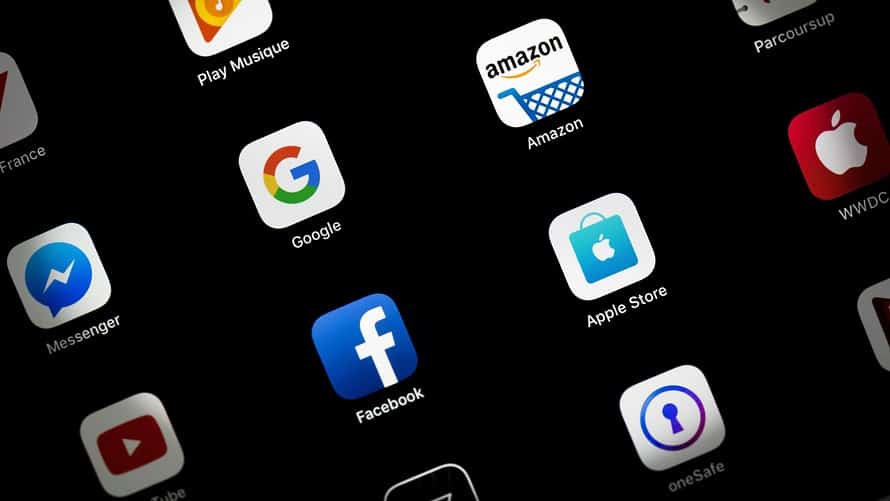
As the S&P 500 index SPX, -0.63% dropped almost 7% in October, and the Dow Jones Industrial Average DJIA, -0.43% shed 5% of its value, the even-bigger drop was in the high-multiple, highflying tech stocks that fell as much as 15%.
And — if the stock market is snapping out of its funk amid decent macroeconomic news, like October’s 3.7% unemployment rate and 250,000 new jobs — tech is where ordinary investors stand to get the sharpest snap back, probably pretty soon and certainly over time.
That truth was brought home when we got fourth-quarter results from Apple AAPL, -6.63% after Thursday’s close. Yes, Apple missed slightly on unit sales of iPhones, and the midpoint of the company’s December-quarter revenue forecast was about $2 billion shy of the FactSet consensus. But what you needed to know — if you’re an investor who doesn’t live and die by trading the day-after news — is two things, and they were both good, even though shares are down on Friday.
The two big things? Apple’s services business had its first $10 billion quarter, confirming the long-term growth thesis for the world’s most-valuable company, and average iPhone selling prices beat expectations while rising almost 27% — showing that consumers are not, as feared, freaked out by the big price hikes the company put through for its new models.
“We’re headed into the holidays with our strongest product lineup ever, and we could not be more bullish about Apple’s future,” CEO Tim Cook said.
Do things that big right, and details will come out in the wash. You can even make money on a stock like Apple as a more-mature company, because its price-to-earnings multiple, now 15 using estimates for the company’s new fiscal year (making no allowance for the $270 billion of cash and securities on Apple’s balance sheet), has never been very high.
Call me nuts, but Apple at a below-market multiple makes total sense even if analysts are mad that the company says it isn’t going to disclose unit sales for iPhone any more. (FactSet says the S&P now trades at just over 20 times forward earnings.)
The bad news: Questions during the call were mostly about Apple trimming back disclosures on its unit sales of iPhones. Less transparency, as Apple should well know, is a common refuge of scoundrels. It’s a bad idea.
Cook either believes what he said about Apple being in better shape than ever or he doesn’t. If it is, broad disclosure including unit-sales data will bolster his point. If Apple is going to make its money on selling stable numbers of increasingly expensive iPhones, plus services and other devices, that’s a case he has to make. If it’s difficult, well, that’s life on the varsity.
But still, Apple is at a 15 P/E, which values the business at about 12 and then adds the cash pile.
Big tech is fairly littered with stories like that right now — big stocks sporting low multiples after October’s selloff because of fairly transient concerns.
Google parent Alphabet GOOG, -1.14% GOOGL, -1.33% certainly fits, at 23 times next year’s earnings. Facebook FB, -0.92% at 20 is a big discount — bigger than its problems with political advertising abuses, which will be cheap to fix. Amazon’s AMZN, +0.00% issues — it guided toward a slower-than-expected Christmas retail season — are nothing compared to the chances to push corporate computing market share toward the cloud.
And all of them beat profit estimates for their most recent quarters.
Say what you like about even Netflix NFLX, -2.61% which has been an extremely expensive stock — 80-some times next year’s profits — ever since its 2002 IPO at less than a buck a share, adjusted for stock splits. So if you held off over concern about price, you missed a 370-bagger. Netflix didn’t miss any tricks in its third quarter: It’s still a secular, worldwide growth company with a lot of room to make way more money in five years than it does now, enough to make its controversial programming investments pay off.
The last month’s selloff has been nothing like the 2000-2002 dot-com crash. But reading the crash even then, and looking for signs of a bottom, was really not difficult. You had to look at the new prices and ask when they made sense for the businesses that Yahoo, Amazon, Priceline and the like were then becoming. I made an even more bullish call than this one on web stocks in August 2002, and never had reason to doubt it.
The logic for betting against the crowd is at least as strong now, after each of the big tech stocks except Apple underperformed the market over the last month.
Each one is a bet on a big tech megatrend — mobile for Apple, cloud computing for Microsoft MSFT, +0.23% and Amazon, and social media for Facebook — that hasn’t gone anywhere. None but Apple are much affected by trade tensions, which are diminishing amid speculation that the current U.S. government is looking for graceful ways to exit its trade conflict with China anyway. And each is in a position to boost profit faster than revenue.
Even when things are “bad,” Apple just beat pretty big on earnings, and the stock is on sale. There’s a word for stocks like that, and the word, with apologies to Jim Cramer, is buybuybuy.

